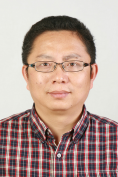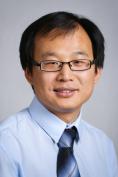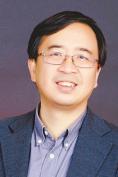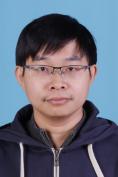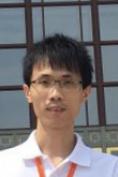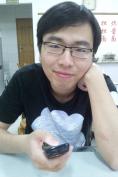Quantum information science exploits the unique properties of quantum mechanics such as superposition and entanglement for enhanced ways of information processing, enabling secure communication, precise measurement, efficient simulation and ultra-fast computation, which may have profound implications on the next generation of information technology. The last few decades have witnessed tremendous progresses in controlling few quantum bits to perform fundamental logic operations and quantum algorithms. Yet, quantum computation is still the most challenging goal to date. One of the major tasks is being able to precisely control a larger number of quantum bits in a scalable manner.
Photonic qubits have appeared to be the only viable choice for quantum communication, and a clean system for demonstrating quantum computing primitives. Parametric down conversion has provided an excellent workhorse for optical quantum information, allowing entanglement of up to ten individual photons, for instance. One of my research goals is to increasingly climb up the number of useful photonic qubits. Two approaches are being undertaken currently.
One route is to exploit the multiple degrees of freedom of a single photon, including its polarization, momentum and angular orbital momentum. Effectively, by entangling these different properties termed as hyper-entanglement one could make more efficient use of qubits. On our current experimental setup of eight-photon entanglement [Nature Photonics 6, 225 (2012)], by simultaneously manipulating the polarization, momentum and angular orbital momentum in a subtle way (controlling one without disturbing another), we are attempting 6-photon 18-qubit entanglement and 8-photon 24-qubit entanglement. The increased number of qubits could offer an enhanced capability for some quantum information tasks.
The second approach is to switch to single quantum emitters, such as InGaAs quantum dots and defects in atomic crystals, which can in principle deterministically emit single photons, avoiding the problems of probabilistic generation and double pair emission in the parametric down conversion. We have managed to produce the purest single photons using pulsed resonance fluorescence with 97% indistinguishability (Nature Nanotechnology 8, 213 (2013), improved to ~99.5% in our more recent experiment using adiabatic rapid passage, see arXiv.1405.1991). This readily provides us a new solid-state source for multi-photon entanglement and optical quantum computing. Moreover, in the future, by engineering suitable spin-photon interaction, Schrödinger-cat like states and cluster states can be directly generated from a single quantum emitter in a sequential manner—like an entangled-photon machine gun as proposed by Terry Rudolph and colleagues. Meanwhile, our efforts will also be devoted to enhancing the photon extraction efficiency from micro- or nano-cavity-embedded quantum dots. It can be estimated that, with a 1-GHz repetition rate, ~50% overall efficiency, we would be able to directly (without using quantum memory) obtain 25-photon coincidence rate at 1 KHz.
Obviously, the field of quantum computation needs both long-term and clearly defined short-term goals. Being able to manipulate 25 individual single photon is certainly still far away from useful universal quantum computation. Yet, for certain special task, this might be sufficient enough to show the power of quantum computation above classical computers. One such interesting task is Boson sampling, which for 25 photons to 625 input-output modes is already difficult for commercially available laptops. Thus, beating a laptop by manipulating 25 single photons on a medium-size optical quantum circuit can be a landmark in the development of quantum computation; this is an important goal we will pursue.
Besides Boson sampling, many other interesting (which will be of longer term) quantum algorithms are emerging that can be tested on multi-qubit platform. We have very recently demonstrated the quantum algorithms for solving systems of linear equations [PRL 110, 230501 (2013)], entanglement-based machine learning, and quantum teleportation of multiple properties (spin & orbit) simultaneously of a single photons. With the increase of our ability to control more photons, we plan to tackle more problems in quantum simulation of, for example, light harvesting process, protein folding, quantum chemistry, and some condensed matter physics models.
In addition to serving as excellent sources of single photons, the quantum dots also provide solid-state traps for single electron spins, as well as a quantum interface linking single spins and single photons. We have recently managed to unconditionally entangle single confined electron spin with the polarization and frequency information of a single photon into a Greenberger-Horne-Zeilinger-type state by full, active control of photon frequency bin qubits [to be submitted]. Using a variant protocol of quantum teleportation, we have also realized deterministic transfer of the quantum state from a single photon to a distant electron spin, which can be an elementary building block for solid-state quantum networks. We have also shown quantum interference of two single photons emitted from two remote, independent quantum dots (with a visibility of 87%, PRL 111, 237403 (2013)). These experiments have moved us closer to the goal of entangling distant spin qubits through photon interference. Based on this, quantum teleportation and controlled logic gate between remote, independent spin qubits are also possible. By enhancing the photon extraction efficiency to near unity as mentioned earlier, such methods may manage to entangle a larger number of stationary spin qubits into functional solid-state quantum networks.
Moving from nonlinear bulk optics to quantum dots has greatly expanded my knowledge in quantum optics and quantum information. Aside from carrying out the above research plans, I will again move away from my comfortable zone, and explore unfamiliar and more challenging interdisciplinary fields. Recently, my group has been investigating single atomic defects in graphene-like two-dimensional atomic monolayers (such as WSe2) as novel single quantum emitters. Preliminary results have shown atom-like anti-bunching and suggested that it might offer a more controllable single-photon source by combining merits of both natural and artificial atoms. The experimental methods might also provide new quantum optics tools for use in the fields of condensed matter physics.
Related News
- 18 Qubits: USTC Scientists Set New Quantum Entanglement Record
- 半岛5.0官网首次实现18个量子比特的纠缠 再次刷新量子纠缠世界记录
- USTC Conducts the First Experiment on Boson Sampling with Photon Loss
- 半岛5.0官网首次实现容忍光子损失的玻色采样实验
- 半岛5.0官网实现基于人类自由意志的量子非定域性检验
- 半岛5.0官网潘建伟教授获国际激光科学和量子光学兰姆奖
- 半岛5.0官网量子信息成果“入选”习近平主席2018年新年贺词 两项量子信息成果同时入选2017年度中国十大科技进展新闻
- LU Chaoyang Honored with Fresnel Prize
- [Xinhua] Unveiling China's "baby" quantum computer
- 中国科学家在基于光和超导体系的量子计算机研究方面取得系列重要进展
Related Publications
-
Demonstration of topologically path-independent anyonic braiding in a nine-qubit planar code. Optica 6, 264 (2019).
-
Experimental demonstration of quantum pigeonhole paradox. Proceedings of the National Academy of Sciences 116, 1549-1552 (2019).
-
On-Demand Semiconductor Source of Entangled Photons Which Simultaneously Has High Fidelity, Efficiency, and Indistinguishability. Physical Review Letters 122, 113602 (2019).
-
12-Photon Entanglement and Scalable Scattershot Boson Sampling with Optimal Entangled-Photon Pairs from Parametric Down-Conversion. Physical Review Letters 121, 250505 (2018).
-
18-Qubit Entanglement with Six Photons Three Degrees of Freedom. Physical Review Letters 120, 260502 (2018).
-
Demonstration of topological data analysis on a quantum processor. Optica 5, 193 (2018).
-
Observation of Topologically Protected Edge States in a Photonic Two-Dimensional Quantum Walk. Physical Review Letters 121, 100502 (2018).
-
Toward Scalable Boson Sampling with Photon Loss. Physical Review Letters 120, 230502 (2018).
-
Experimental test of the irreducible four-qubit Greenberger-Horne-Zeilinger paradox. Physical Review A 95, 030103 (2017).
-
High-efficiency multiphoton boson sampling. Nature Photonics 1-5 (2017). doi:10.1038/nphoton.2017.63
